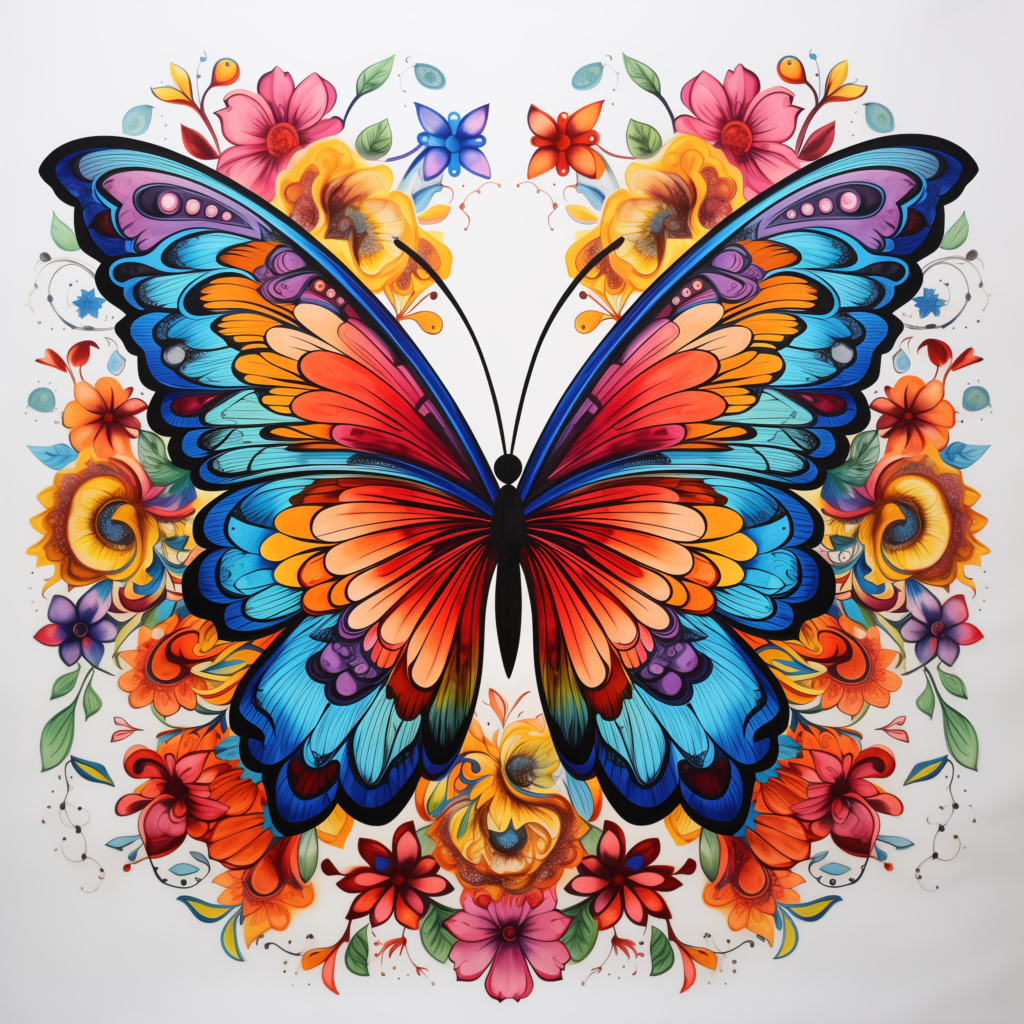Coloring is often associated with childhood, but in recent years, it has become a popular activity for adults as well. Beyond being a simple and enjoyable pastime, adult coloring offers a range of psychological benefits that can improve mental well-being. From reducing stress to enhancing mindfulness, coloring has proven to be more than just a creative outlet—it’s a powerful tool for promoting mental health.
Table of Contents

Understanding the Popularity of Adult Coloring
The resurgence of coloring books designed specifically for adults is no coincidence. As life becomes increasingly fast-paced and stressful, many people are turning to simple, meditative activities to help them unwind. Adult coloring books, with their intricate patterns and sophisticated designs, provide an accessible way to relax and disconnect from the demands of daily life.
Social media has played a significant role in popularizing adult coloring. Platforms like Instagram and Pinterest are filled with images of completed coloring pages, inspiring others to pick up colored pencils and join in. This online sharing culture has helped to build a community around adult coloring, making it a shared experience rather than a solitary one.

How Coloring Affects the Brain
The psychological benefits of coloring can be traced back to its impact on the brain. Engaging in coloring activates different parts of the brain, particularly those associated with relaxation and creativity.
Coloring and Stress Reductionx
One of the most significant benefits of adult coloring is its ability to reduce stress. Coloring engages the amygdala, the part of the brain responsible for fear and stress responses. By focusing on a simple, repetitive task like coloring, the brain is able to relax, reducing the activity of the amygdala and leading to a calmer state of mind.
The act of coloring can induce a meditative state, similar to what is experienced during mindfulness practices. This meditative state helps to lower cortisol levels (the hormone associated with stress), allowing the body to relax and the mind to clear. In this way, coloring serves as a form of active meditation, helping individuals to escape the pressures of daily life.
Coloring and Mindfulness
Mindfulness is the practice of staying present in the moment, and coloring naturally promotes this state of being. When you color, you are fully engaged in the activity, focusing on the colors, patterns, and strokes. This level of engagement helps to quiet the mind, reducing the mental clutter that can lead to anxiety and stress.
By promoting mindfulness, coloring also enhances focus. In a world filled with constant distractions, the ability to concentrate on a single task is incredibly valuable. Coloring requires you to pay attention to detail, whether it’s staying within the lines or choosing the right color combinations. This focus not only helps to improve mindfulness but also sharpens cognitive functions over time.
Coloring and Creativity
Coloring offers a structured form of creative expression, providing a balance between freedom and guidance. The outlines in coloring books give structure, while the choice of colors and techniques allows for personal expression. This combination of structure and freedom can boost creativity, as it encourages the brain to think creatively within a defined space.
Moreover, the act of coloring can improve problem-solving skills. Deciding which colors to use and how to blend them effectively requires creative thinking and decision-making, which can enhance cognitive flexibility and innovation in other areas of life.

Emotional Benefits of Adult Coloring
Beyond its cognitive and stress-reducing effects, adult coloring also offers significant emotional benefits. Whether you’re looking to manage anxiety or simply boost your mood, coloring can be a powerful tool for emotional well-being.
Alleviating Anxiety
For those who struggle with anxiety, coloring can provide a much-needed respite. The repetitive nature of coloring patterns is particularly soothing, helping to calm the mind and reduce anxious thoughts. When you color, you focus on the task at hand, which can help to break the cycle of rumination that often accompanies anxiety.
Coloring also provides a sense of control, which is crucial for managing anxiety. When you choose colors and fill in spaces, you’re in complete control of the outcome, which can be empowering and help to reduce feelings of helplessness.
Improving Mood
Engaging in creative activities like coloring has been shown to boost mood by increasing the production of serotonin and dopamine—neurotransmitters that are associated with feelings of happiness and pleasure. The sense of accomplishment that comes from completing a coloring page also contributes to an improved mood, as it provides a tangible result of your efforts.
Coloring allows you to escape from the pressures of daily life and enter a state of flow, where you are fully immersed in the activity. This state of flow is associated with increased happiness and reduced feelings of depression.
Coloring as a Form of Self-Expression
Coloring offers a unique way to express emotions, particularly for those who might find it difficult to articulate their feelings verbally. The colors and designs you choose can reflect your mood and inner state, allowing you to process emotions in a non-verbal way. This form of self-expression can be incredibly therapeutic, helping to release pent-up feelings and reduce emotional distress.

Social and Cognitive Benefits
In addition to its emotional and psychological effects, adult coloring can also have social and cognitive benefits.
Enhancing Social Connections
Coloring is often viewed as a solitary activity, but it can also be a social one. The rise of coloring groups, both in-person and online, has created opportunities for people to connect over a shared interest. These groups provide a sense of community and belonging, which is essential for emotional well-being.
Sharing your coloring work with others, either online or in a group setting, can also provide positive reinforcement and encouragement, boosting self-esteem and motivation.
Cognitive Improvements
Regular coloring can lead to cognitive benefits such as improved concentration and focus. The detailed nature of adult coloring books requires sustained attention, which can help to improve focus over time. This enhanced focus can carry over into other areas of life, improving productivity and cognitive function.
Coloring also enhances problem-solving skills, as it involves making decisions about colors, shading, and blending. These decisions require analytical thinking, which can help to sharpen cognitive abilities.

The Therapeutic Use of Coloring
The therapeutic potential of coloring is increasingly recognized in clinical settings. Coloring is now being used as a tool in art therapy and other therapeutic practices to help individuals manage stress, anxiety, and other mental health issues.
Art Therapy and Coloring
Art therapy uses creative activities like coloring to help individuals explore emotions, develop self-awareness, and cope with stress. In art therapy sessions, coloring is often used as a starting point for deeper emotional exploration. The act of coloring can help to break down emotional barriers, making it easier for individuals to express and process their feelings.
Several case studies have shown that coloring can have therapeutic effects, particularly in reducing symptoms of anxiety and depression. By providing a safe and controlled way to express emotions, coloring can facilitate healing and emotional growth.
Coloring in Clinical Settings
Coloring is increasingly being used in hospitals and clinics to help patients manage stress and anxiety. In these settings, coloring serves as a calming activity that can distract patients from pain or discomfort and provide a sense of control during a time of uncertainty.
Therapeutic coloring programs have been implemented in various healthcare settings, with success stories highlighting its effectiveness in reducing anxiety and improving patient outcomes.

Practical Tips for Incorporating Coloring into Daily Life
To reap the psychological benefits of coloring, it’s important to make it a regular part of your routine. Here are some practical tips for incorporating coloring into your daily life:
- Set Aside Time for Regular Coloring Sessions: Schedule time for coloring, whether it’s a few minutes each day or longer sessions a few times a week. Consistency is key to experiencing the full benefits.
- Choose the Right Coloring Books and Tools: Invest in quality coloring books and tools that you enjoy using. This will make the experience more enjoyable and encourage you to stick with it.
- Create a Calming Environment for Coloring: Find a quiet, comfortable space where you can color without distractions. Consider playing soft music or lighting candles to enhance the relaxing atmosphere.

Common Misconceptions About Adult Coloring
Despite its many benefits, there are still some misconceptions about adult coloring that may discourage people from trying it. Let’s address a couple of these myths:
“Coloring is Just for Kids”
While coloring is often associated with childhood, it is far from being just a child’s activity. Adult coloring books are specifically designed to cater to mature tastes, with intricate patterns and themes that appeal to adults. The psychological benefits of coloring are just as valid for adults as they are for children.
“Coloring Isn’t a Productive Activity”
Some might view coloring as a waste of time, but this couldn’t be further from the truth. Coloring offers a range of mental health benefits, from reducing stress to improving cognitive function. In fact, taking time to engage in a relaxing activity like coloring can make you more productive in other areas of your life by reducing stress and increasing focus.
Conclusion
Coloring is more than just a fun and creative activity—it’s a powerful tool for improving mental well-being. By reducing stress, enhancing mindfulness, and providing an outlet for self-expression, coloring offers a wide range of psychological benefits. Whether you’re looking to manage anxiety, boost your mood, or simply find a relaxing hobby, adult coloring is worth exploring. So, grab your coloring book and pencils, and start enjoying the mental health benefits today.